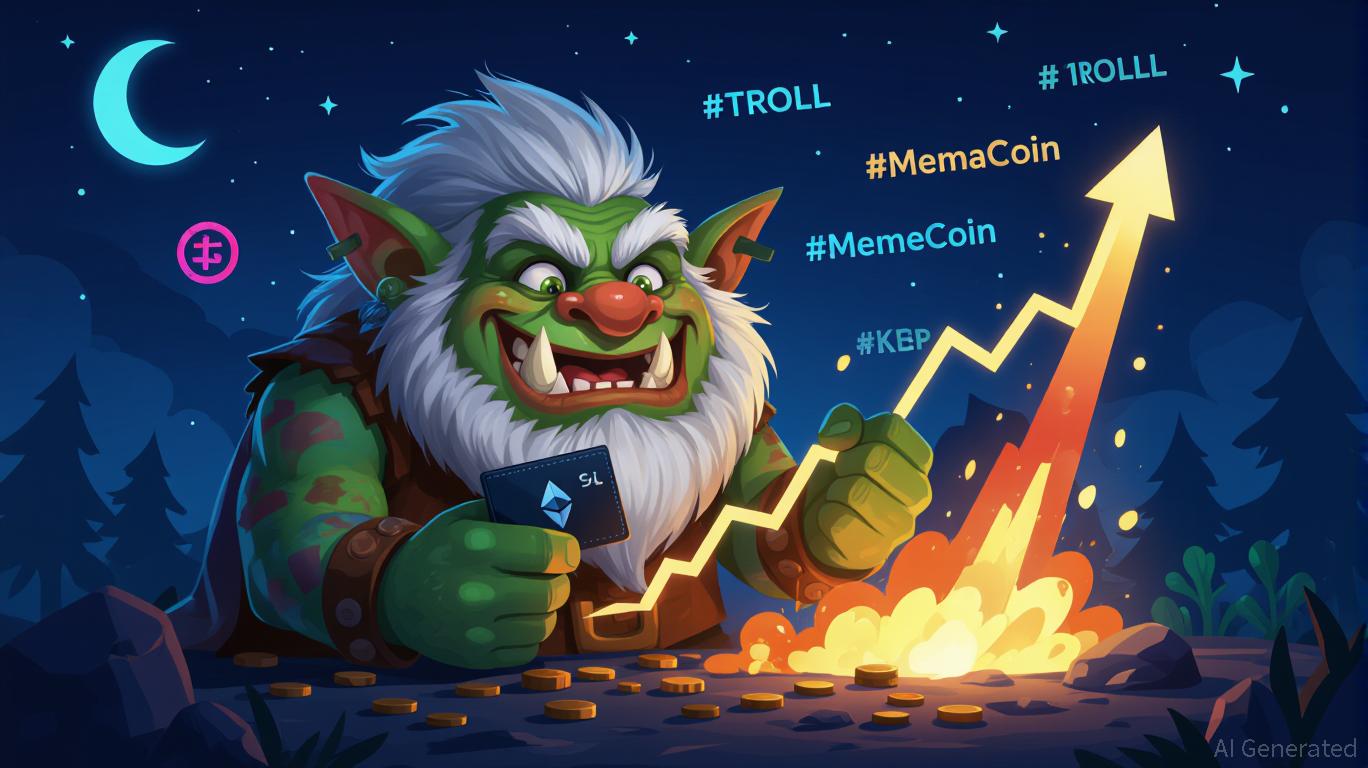In the volatile realm of cryptocurrency, few phenomena encapsulate the interplay of behavioral finance and market psychology as vividly as the Solana memecoin boom. The case of the TROLL meme coin—whose value surged 174,948% in under a year—offers a masterclass in how human biases, social dynamics, and algorithmic tools collide to create both astronomical gains and catastrophic misjudgments. For investors, this story is not just about missed profits but a window into the irrational forces that drive speculative markets.
The TROLL Case Study: A $45M Lesson in Behavioral Biases
In April 2025, TROLL, a Solana-based memecoin, became a viral sensation, propelling its market cap from $9,360 to $158 million in months. Retail trader Leland Fawcette, who sold his position for 9 SOL, missed a potential $36 million windfall. His decision, while rational in hindsight, reflects a common behavioral trap: loss aversion and anchoring bias. Fawcette’s early exit was likely influenced by the fear of overextending gains, a classic reaction to rapid price appreciation. Yet, this underscores a critical flaw in speculative trading: the inability to balance short-term caution with long-term potential.
The TROLL saga also highlights herd mentality. As social media platforms amplified the coin’s meme-driven narrative, investors flocked in, driven by FOMO (fear of missing out). This collective frenzy created a self-fulfilling prophecy, where demand outpaced any intrinsic value.

The Psychology of Speculative Markets
- FOMO and Overconfidence: The Solana memecoin ecosystem thrives on rapid, community-driven hype. Traders often enter late, driven by FOMO, while overconfident participants assume they can time the market. This duality fuels bubbles and crashes.
- Narrative-Driven Valuation: Unlike traditional assets, memecoins derive value from cultural relevance. TROLL’s success was less about fundamentals and more about its ability to capture a zeitgeist—a phenomenon akin to the “hot stock” penny stock trends of the 2020s.
- Bot-Driven Illusions: Automated trading bots and snipers exploit early liquidity, creating artificial price spikes. Retail investors, unaware of these tools, often misinterpret bot-driven momentum as organic demand, leading to poor timing decisions.
External Forces: Liquidity Shifts and Market Ecosystems
The TROLL boom coincided with broader crypto dynamics. High-profile projects like the Official Trump (TRUMP) memecoin siphoned capital from established Solana assets, triggering a 45% drop in SOL’s price. This “liquidity vampire” effect, as described by industry analysts, reveals how speculative niches can destabilize entire ecosystems.
Moreover, the sheer volume of Solana memecoins—over 20,000 launched daily in 2024—creates a lottery effect. Most tokens vanish within hours, but a few outliers (like TROLL) generate disproportionate returns. This environment rewards luck as much as strategy, compounding the risks for unsophisticated investors.
Investment Advice: Navigating the Chaos
For those considering Solana memecoins, the TROLL case offers three key lessons:
1. Embrace Patience and Discipline: Avoid selling prematurely due to anxiety. Set clear exit strategies based on technical indicators, not emotional triggers.
2. Diversify and Hedge: Given the high failure rate of memecoins, allocate only a small portion of your portfolio to speculative assets. Use stop-loss orders to mitigate losses.
3. Leverage Data, Not Hype: Analyze on-chain metrics (liquidity pools, trading volume) and social sentiment to identify sustainable projects. Avoid tokens with red flags like honeypot contracts.
Conclusion: The Human Element in Crypto
The $45 million missed opportunity with TROLL is a microcosm of speculative markets: a blend of psychology, technology, and chaos. While the allure of overnight riches is undeniable, the path to success lies in understanding one’s own biases and the mechanics of the market. For investors, the takeaway is clear: in the high-risk world of Solana memecoins, survival often hinges on emotional discipline, not just technical skill.
As the crypto landscape evolves, the line between innovation and speculation will blur further. Those who master the art of behavioral finance—recognizing their own tendencies and the crowd’s—will be best positioned to navigate the next TROLL-like surge—or avoid its pitfalls.